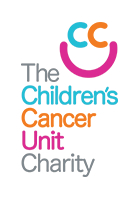About Cancer
Leukaemia
Leukaemia is a cancer of the white blood cells. All blood cells are made in the bone marrow. Bone marrow contains:
- red blood cells, which carry oxygen around the body
- platelets, which help the blood to clot and control bleeding
- white blood cells, which help fight infection.
There are two different types of white blood cells: lymphocytes and myeloid cells (including neutrophils). These white blood cells work together to fight infection. Normally, white blood cells develop, repair and reproduce themselves in an orderly and controlled way. In leukaemia, however, the process gets out of control and the cells continue to divide in the bone marrow, but do not mature.
These immature dividing cells fill up the bone marrow and stop it from making healthy blood cells. As the leukaemia cells are not mature, they cannot work properly. This leads to an increased risk of infection. Because the bone marrow cannot make enough healthy red blood cells and platelets, symptoms such as anaemia and bruising can occur.
Brain tumours
Brain tumours can be either primary or secondary. Primary brain tumours develop in the brain. Secondary brain tumours happen when cancer cells from a cancer that started somewhere else in the body spread to the brain.
This information is about primary brain tumours. For more detailed information, contact The Children’s Cancer and Leukaemia Group (CCLG) who provide a booklet Brain and spinal tumours – a parent’s guide.
Germ cell tumours
Germ cell tumours can appear at any age. They develop from cells that produce eggs or sperm so most germ cell tumours affect the ovaries or testes. But it’s possible for a germ cell tumour to develop in other parts of the body.
As a baby develops during pregnancy, the cells producing eggs or sperm normally move to the ovaries or testes. However, occasionally they can settle in other parts of the body where they can develop into tumours. The most common places for this to happen are the bottom of the spine (sacrococcygeal), the brain, chest and abdomen.
Germ cell tumours are sometimes given different names based on their characteristics. These include yolk-sac tumours, germinomas, embryonal carcinomas, teratomas and immature teratomas.
Hodgkin lymphoma
The first sign of Hodgkin lymphoma is usually a painless swelling of one gland, or a group of lymph glands, which continues for some weeks or even months. The first glands that are likely to be affected are in the neck or above the collarbone, most often only on one side. However, it’s important to remember that children’s glands can also become swollen when they have a common infection that causes a sore throat or a cold.
If glands in the chest are affected, this can cause a cough or breathlessness. This is caused by the pressure the glands exert on the airways.
Sometimes, a child with Hodgkin lymphoma may have a high temperature (fever), night sweats, weight loss or itchy skin.
Neuroblastoma is a cancer of specialised nerve cells called neural crest cells. These cells are involved in the development of the nervous system and other tissues.
Neuroblastoma
Neuroblastoma most commonly occurs in:
- either one of the two adrenal glands situated in the abdomen (tummy)
- nerve tissue that runs alongside the spinal cord, in the neck, chest, abdomen
or pelvis.
The adrenal glands are specialised glands that are found above both kidneys. They normally release hormones to maintain blood pressure and help the body respond to stress.
In some cases, neuroblastoma can spread to tissues beyond the original site such as the bone marrow, bone, lymph nodes, liver and skin.
Wilms’ tumour
Wilms’ tumour is a type of kidney cancer that was named after Dr Max Wilms, who first described it. It’s thought to come from very specialised cells in the embryo known asmetanephric blastema. These cells are involved in the development of the child’s kidneys while they’re in the womb. The cells usually disappear at birth, but in many children with Wilms’ tumour, cells called nephrogenic rests can still be found.
Sarcomas
Sarcomas are rare types of cancer that develop in the supporting tissues of the body, such as bone, muscle or cartilage. There are two main types of sarcomas:
- Soft tissue sarcomas can develop in muscle, fat, blood vessels, or in any of the other tissues that support, surround and protect the organs of the body.
- Bone sarcomas can develop in any of the bones of the skeleton.
Osteosarcoma
Osteosarcoma often starts at the ends of the long bones, where new bone tissue forms as a young person grows. Any bone in the body can be affected, but the most common sites are in the arms and legs, particularly around the knee and shoulder joints.
There are several different types of osteosarcoma. Most occur in the centre of the bone. There are also rare subtypes, such as parosteal, periosteal, telangiectatic, and small cell osteosarcoma.
Ewing’s sarcoma
Ewing’s sarcoma is the second most common primary sarcoma in children and young people. This type of cancer is a bone cancer and most commonly occurs in the long bones, ribs, pelvis and spine (vertebral column).
Fewer than 30 children in the UK develop Ewing’s sarcoma each year. It usually occurs in the teenage years, and is more common in boys.
Although Ewing’s sarcoma is a type of bone cancer, it can also occur very rarely in the soft tissues. This is called extraosseous Ewing’s sarcoma. Another type of Ewing’s sarcoma is a primitive neuroectodermal tumour (PNET). These can be found in either the bone or soft tissue.
